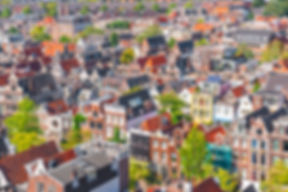5 Things the Dutch put on their bread – Part 1
- Naomi Verstoep
- Oct 20, 2023
- 3 min read
When it comes to culinary traditions, the Netherlands may not be the first country that comes to mind. However, the Dutch are great at enjoying life's simple pleasures: brood (bread). In the Netherlands, you can eat bread for breakfast, lunch or even dinner!
And what do the Dutch put on their boterham (slice of bread)? Do they make elaborate sandwiches with different layers? Nee, doe normaal!
You often prepare your boterham with a bit of butter and one other topping. There are a lot of different toppings, but we’ll start with 5 things the Dutch put on their boterham:
1. Hagelslag
One of the most iconic and beloved Dutch bread toppings is hagelslag. Hagelslag is essentially chocolate sprinkles, and it comes in many forms and flavors. You can have ‘melkchocolade’, ‘pure chocolade’, ‘witte chocolade’, ‘extra puur’, and there is also a ‘vruchten hagelslag’ (fruit flavored) and ‘anijs hagelslag’ (anise flavored).
De Ruijter is one of the classic hagelslag brand, but most supermarkets also have it's own label/brand. If you go to the Netherlands and you would like to try them all, get the ‘De Ruijter mini’s’. These are mini-versions of the hagelslag boxes and you can try out all flavors!

Hagelslag brand Venz makes hagelslag with extra mini-chocolates. Of course you have to shake as much hagelslag on your boterham as you can, to get the most mini's!

2. Vlokken
A variant on hagelslag are these chocolate flakes called vlokken. Just like hagelslag, these also come in different chocolate flavors and extra thick:

3. Kaas
Of course, kaas (cheese) can’t be missing from this list! Kaas is an integral part of Dutch cuisine. In every town, there are lots of kaaswinkeltjes (local cheese shops connected to farms). There is a lot of choice. There are many variations based on location: Goudse kaas, Noord-Hollandse kaas, Edammer kaas, Friese kaas, Leidse kaas and Stolwijkse kaas (which is my hometown!). Needless to say, kaas is my favorite thing on my boterham.

There is a distinction in how cheese is made: boerenkaas (farmer’s cheese) which typically uses the milk of cow’s from one farm only. And fabriekskaas (factory cheese) which mixes milk from different farmers together to make their cheese. Fabriekskaas is often found in supermarkets. However, in a kaaswinkel both cheeses are available.
There is also a distinction in the age: jonge kaas (young cheese, aged 4 weeks), jong-belegen kaas (aged 8-10 weeks), belegen kaas (aged 16-18 weeks), extra belegen kaas (aged 7-8 months), oude kaas (aged 10-12 months) and overjarige kaas (aged 18 months or more).
There are many different types of cheeses: geitenkaas (goat’s cheese), magere kaas (“skinny cheese”, thus low-fat cheese), komijnekaas (cumin cheese), pesto kaas, pittige kaas (spicy cheese) and much more. Make sure to visit the local kaaswinkel to try them all!

The picture on the right is from the local kaaswinkel in Stolwijk, where I buy my cheese when I visit. You can check them out here.
Ps. Did you know you can fill your WHOLE SUITCASE with hard cheese to bring back to Canada? As long as you indicate what you are bringing in at the border, and it is for personal consumption, you are allowed to bring this home.
4. Pindakaas
Pindakaas (literally: peanut cheese, but of course: peanut butter), is a popular choice for your Dutch boterham. However, it's not your ordinary peanut butter; it's thicker and has a slightly sweet taste. In the Netherlands, you can finish your pindakaas boterham a little fancier by sprinkling hagelsag on top!
Calvé Pindakaas is a popular brand and they make fun Dutch TV commercials, like this one about Lieke Martens who was chosen as the world’s best female soccer player of 2017.
5. Speculaas

Speculaas is a type of crunchy cookie made with speculaas spices (cinnamon, cloves, mace, ginger, white pepper, cardamom, coriander, anise and nutmeg). And what could be better then to just put a cookie on your boterham?
You can also enjoy a spreadable speculaas called ‘Speculoos’. This is made by Lotus and is available in many supermarkets in North America.
Which topping are you going to try next time you are in the Netherlands? Let me know in the comments!
Would you like to see more Dutch content?
Check out Dutch Academy on Facebook and Instagram for Dutch expressions, vocabulary, culture and tips to learn Dutch!
